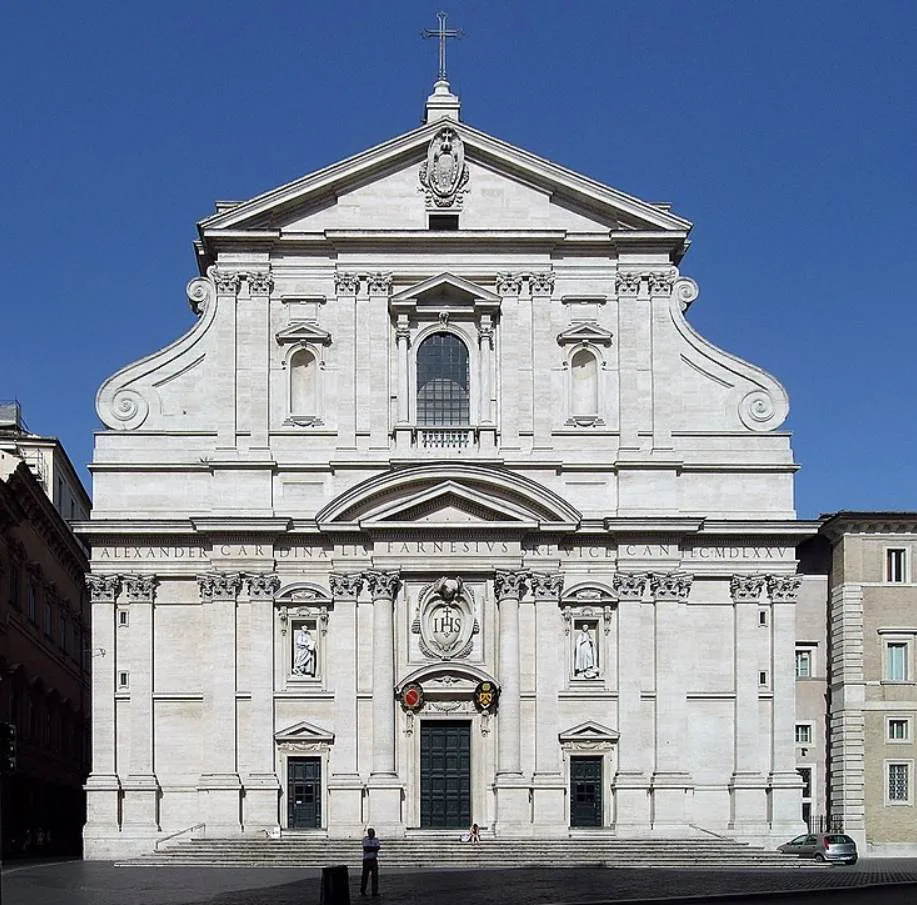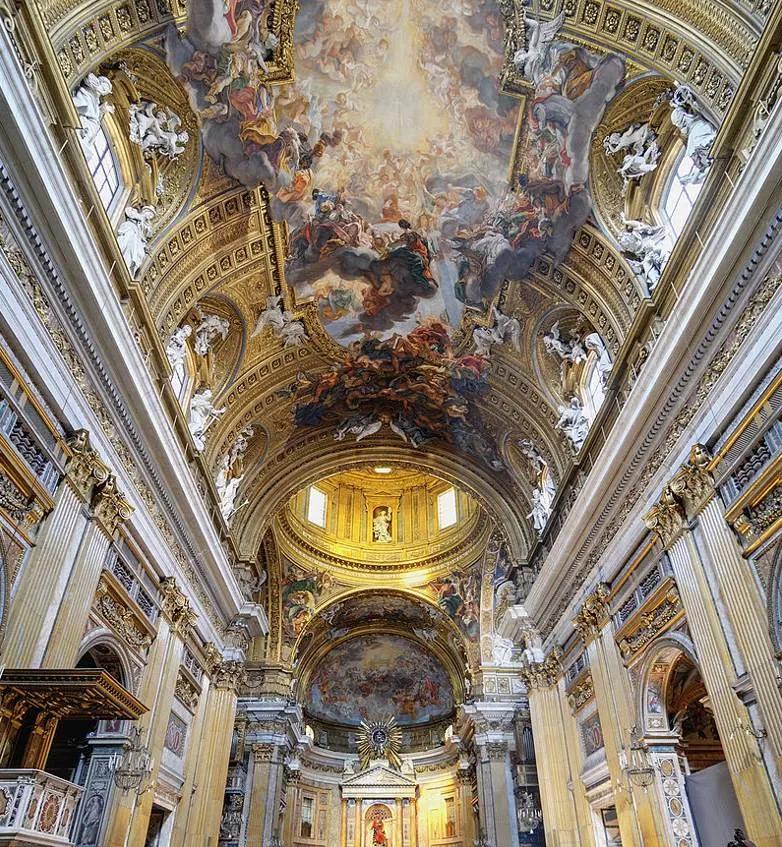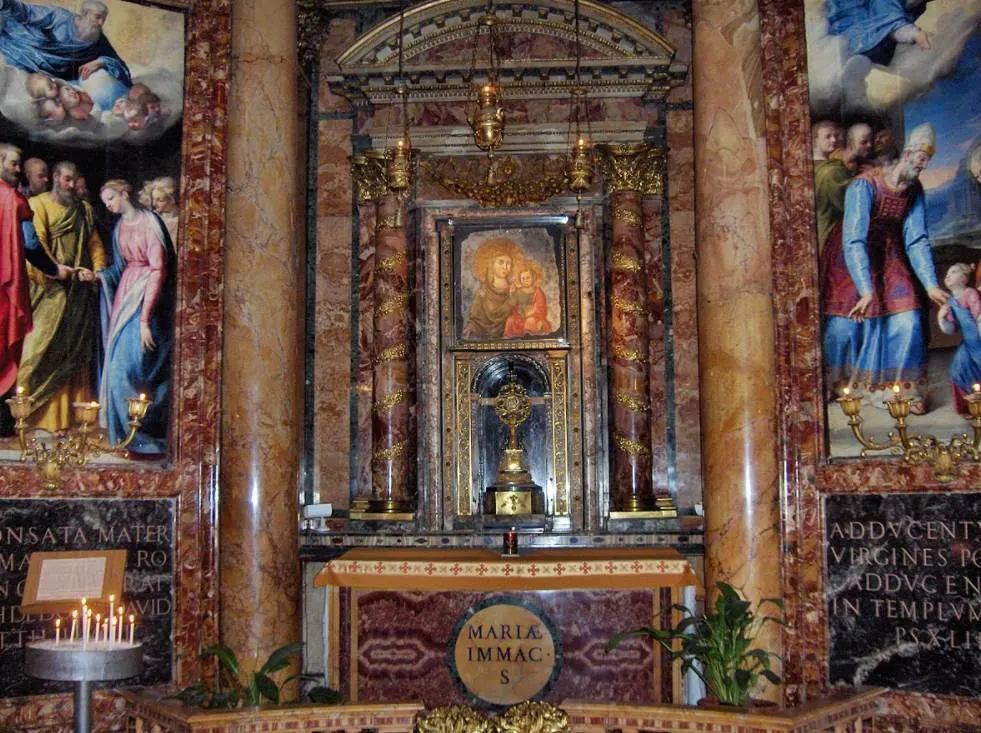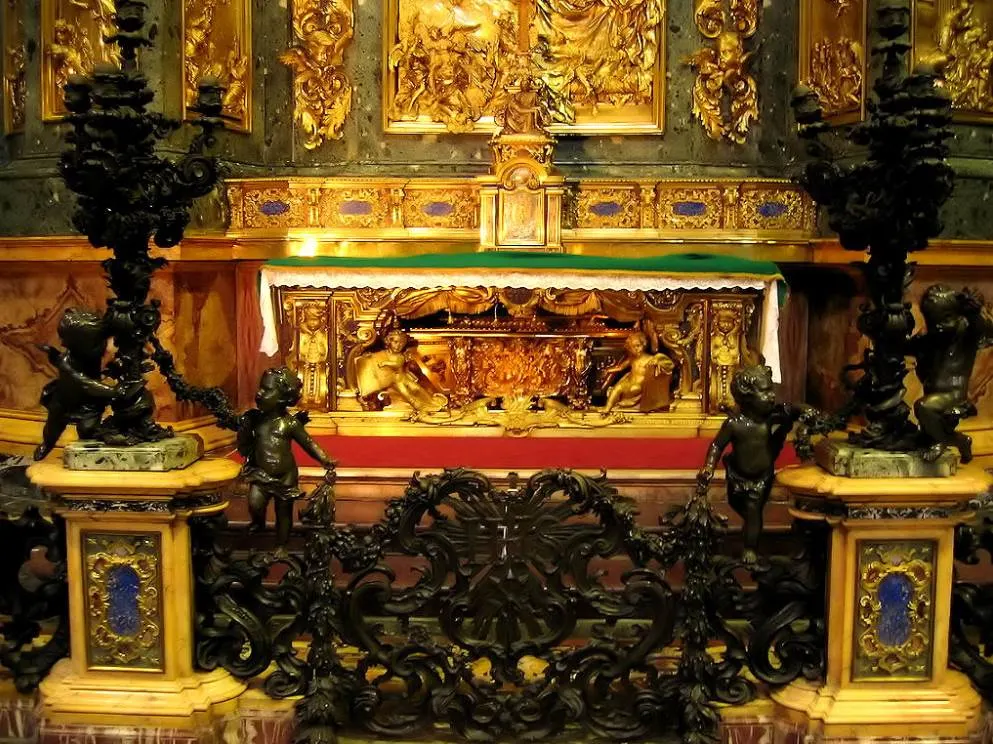The mother church of a Roman Catholic Order is one of the most amazing Baroque buildings you’ll ever come across. It also features a remarkable element that makes it one of the most important structures of the Baroque era.
Let’s take a closer look at some of the most interesting facts about the Church of the Gesù, an incredible landmark in Rome that has some interesting stories to tell.
1. It’s located on a square with the same name in the heart of Rome
The Church of the Gesù is locally known as “Chiesa del Gesù” and is the mother church of the Jesuit Order, a Roman Catholic religious order that was established in the 16th century.
The mother church of the Society of Jesus is officially known as the “Chiesa del Santissimo Nome di Gesù all Argentina” or “Church of the Most Holy Name of Jesus at Argentina.”
The façade of the church faces a square with the same name called the “Piazza del Gesù” which can be found just south of one of the city’s most popular squares called the “Piazza Venezia.” ON this square you can find the amazing landmark monument called the “Altar of the Fatherland.”
Just walking distance to the east you can find the Roman Forum, the historic marketplace of ancient Rome. The Roman Pantheon is just walking distance to the west as well.

2. It was commissioned by the founder of the Jesuits in 1551
The Society of Jesus is a Roman Catholic religious order that was founded by a Spanish Catholic priest named Ignatius of Loyola (1491-1556) in the year 1540.
The order was approved by Pope Paul III on September 27, 1540, to focus on missionary work and teachings all around the world.
This was a period in history that the Protestant Reformation emerged and the Council of Trent (1545-1563) was established, a council that resulted in the Catholic Counter-Reformation.

The idea to build a church was conceived by Loyola in 1551 but construction only started in 1568, 12 years after the man passed away. It was officially consecrated on November 25, 1584.

3. The façade of the building wasn’t part of the original plan
The original architect of the building was Giacomo Barozzi da Vignola (1507-1573), the main architect of the powerful Farnese family in Rome. He is considered to be the leading Mannerist architect of the 16th century.
When he died, his work was continued by Giacomo della Porta (1532-1602), a famous Italian sculptor and architect who worked in the Early Baroque style. He is credited with the construction of the cross-vault, dome, and the apse of the church.
His most famous addition to the church is the Baroque façade, a feature considered to be the first true Baroque façade in Rome that introduced the Baroque style in Rome.

4. Its design served as an example for Jesuit churches worldwide
The Baroque façade of the church not only introduced Baroque architecture to Rome but also served as the model of all other Jesuit churches that were constructed in the world.
Some of these architectural features include:
- The absence of a narthex, a reception area in the front of the church.
- A single nave that doesn’t feature aisles.
- Short transepts that solely focus on the altars on their walls.
Some of the most notable examples are the Church of St. Michael in Munich (1583–1597), the Church of St. Ignatius of Loyola in Buenos Aires (1710–1722), and the Church of the Gesù in Philadelphia (1879–1888).

5. The interior’s ceiling features immense trompe l’oeil frescoes
The distinctive Baroque façade is an amazing element of the church’s design, but that’s not the most stunning element. The true beauty of the church is the interior decoration.
The entire ceiling is decorated with an astounding fresco painted by Giovanni Battista Gaulli (1639-1709), an artist who worked during the High Baroque period, a prelude to the Rococo artists of the 18th century.
He painted the ceiling using a fascinating trompe l’oeil effect, an optical illusion that makes the painting appear to move in and out of its location. He also painted the frescoes of the dome, the transepts, and the central vault of the church.
The ultimate masterpiece inside the church is a painting called “The Triumph of the Name of Jesus,” one of the numerous paintings glorifying Jesus Christ inside the building.

More interesting facts about the Church of the Gesù in Rome
6. It took just 12 years to complete the building between 1568 and 1580. It was built on the location of a previous church called “the church of Santa Maria della Strada.”
The reason why it was built here was because of the presence of a 13th or 14th-century fresco called “Madonna Della Strada.” This Madonna della Strada is the patron saint of the Society of Jesus and the fresco is still located inside the church today.

7. One of the main reasons that the church was constructed at such a fast pace was that it was funded by Cardinal Alessandro Farnese, the grandson of Pope Paul III who had approved the order in 1540.
The church is relatively big as well with a length of 75 meters (246 feet) and a width of 35 meters (115 feet). The nave itself has a width of 25 meters (82 feet).
8. Because the building was funded by Cardinal Farnese, he had no other choice than to hire the family’s architect, Giacomo Barozzi da Vignola. He could have found a much cheaper solution, though.
Michelangelo (1475-1564), the renowned multi-talented Renaissance artist, clearly liked the idea of building a church of the Jesuits. He offered his services for free out of sympathy for the newly established religious order.
Just remember, this was a period shortly after Michelangelo was appointed as the main architect of St. Peter’s Basilica, arguably the most amazing church in the world.
9. The lack of a narthex leads you right into the nave of the church after entering it. This draws you to the elaborately decorated high altar of the church. To the right of the high altar, you can find the Madonna della Strada fresco.
To the left, you can find the amazingly decorated tomb of Saint Ignatius, a feature designed by Baroque artist Andrea Pozzo (1642-1709 between 1696 and 1700.

Yes, this means that Saint Ignatius of Loyola is buried inside the mother church of the Society of Jesus, the order he founded in 1540.
10. The overall design of the building resembles that of Renaissance buildings which emphasize organization and harmony. It features large columns that lead you to the high altar and a magnificent dome.
It’s fair to conclude that the dome is a close competitor to being the most amazing feature inside the church. It features the typical theatrical Baroque elements and an amazing fresco.
The fresco inside the copula and its pendentives were also the work of Giovanni Battista Gaulli, the man who produced the incredible “Triumph of the Name of Jesus” on the ceiling of the nave.

